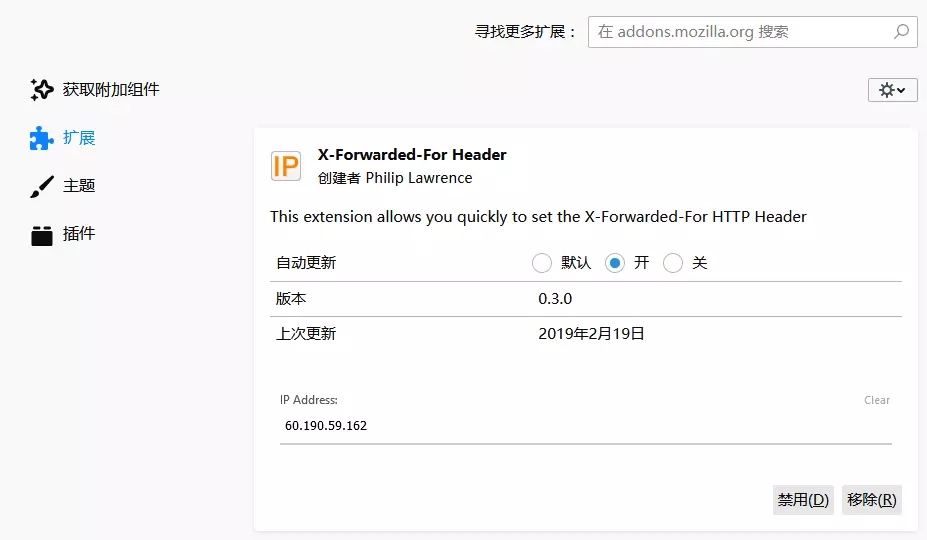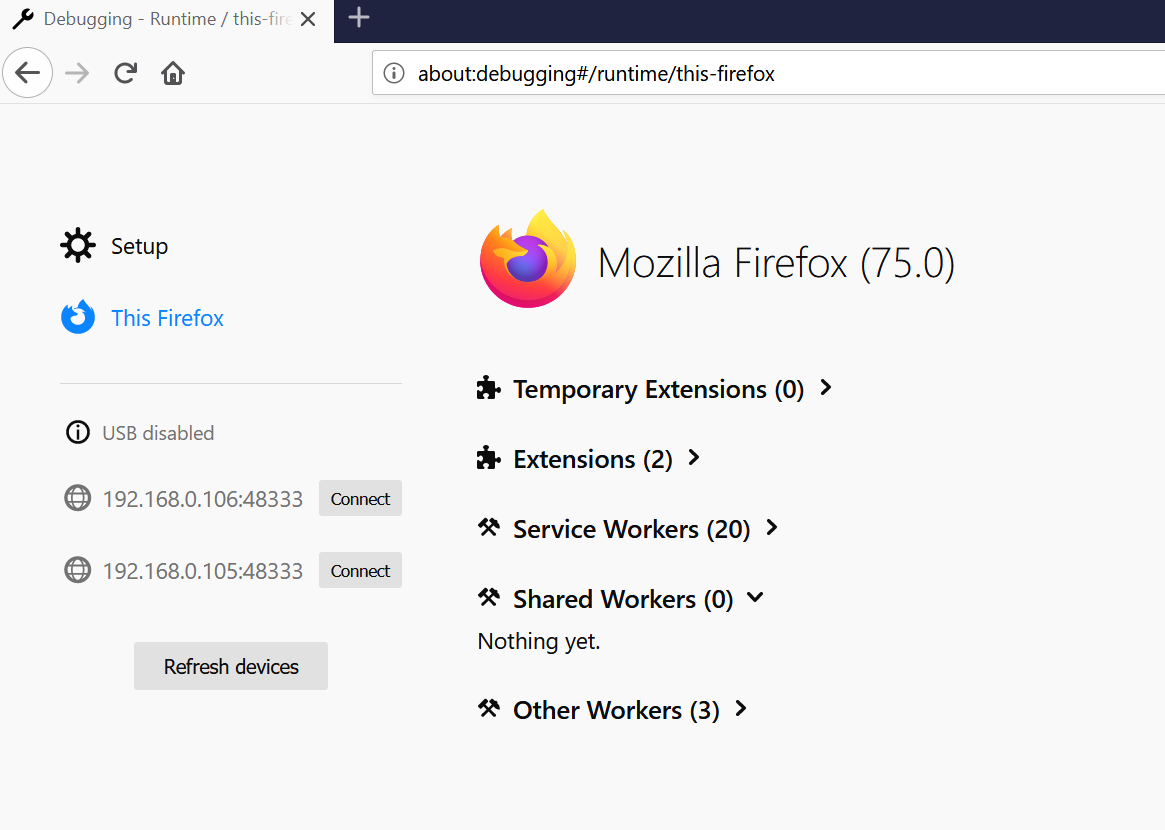Get Firefox, a free web browser backed by Mozilla, a non-profit dedicated to internet health and privacy. Available now on Windows, Mac, Linux, Android and iOS.
X Forwarded Firefox To Google
The X-Requested-With header gets added to the end of the line nicely, so I expect the same when you have the X-Forwarded-For header present. Note, changes made down there likely won't be supported and certainly won't survive a Splunk update. Forwarded-For (XFF) Configuration To assign multiple policies for a single Network identity (an egress IP) and identify internal IP addresses in reports, you must configure XFF. You can do this by using an on-premise proxy, or by using a browser plugin such as (for Firefox) the Simple Modify Headers plugin. Recent versions of Firefox and many other web browsers are having such compatibility issues. Unlike most regular Linux GUI apps that are developed for a specific task, web browsers can be a platform for running other programs (ex. Web apps and plugins developed with JavaScript). Hence web browsers are trying to create a sandbox for safely. There is no doubt in my mind that Mozilla is looking hard—very hard—at all the different ways it can monetize the Firefox web browser going forward. I’m still thrilled that the company has.
HTTP pipelining is a technique in which multiple HTTP requests are sent on a single TCP (transmission control protocol) connection without waiting for the corresponding responses.[1]
The technique was superseded by multiplexing via HTTP/2,[2] which is supported by most modern browsers.[3]
As of 2018, HTTP pipelining is not enabled by default in modern browsers, due to several issues including buggy proxy servers and HOL blocking.[2]
Motivation and limitations[edit]
The pipelining of requests results in a dramatic improvement[4] in the loading times of HTML pages, especially over high latency connections such as satellite Internet connections. The speedup is less apparent on broadband connections, as the limitation of HTTP 1.1 still applies: the server must send its responses in the same order that the requests were received—so the entire connection remains first-in-first-out[1] and HOL blocking can occur. The asynchronous operation of HTTP/2 and SPDY are solutions for this.[5] Browsers ultimately did not enable pipelining by default, and by 2017 most browsers supported HTTP/2 by default which used multiplexing instead.[2]
Non-idempotent requests, like those using POST, should not be pipelined.[6] Sequences of GET and HEAD requests can always be pipelined. A sequence of other idempotent requests like PUT and DELETE can be pipelined or not depending on whether requests in the sequence depend on the effect of others.[1]
HTTP pipelining requires both the client and the server to support it. HTTP/1.1 conforming servers are required to support pipelining. This does not mean that servers are required to pipeline responses, but that they are required not to fail if a client chooses to pipeline requests.[7]
Implementation status[edit]
Pipelining was introduced in HTTP/1.1 and was not present in HTTP/1.0.[8]
Implementation in web servers[edit]
Implementing pipelining in web servers is a relatively simple matter of making sure that network buffers are not discarded between requests. For that reason, most modern web servers handle pipelining without any problem.
Implementation in web browsers[edit]
Of all the major browsers, only Opera based on Presto layout engine had a fully working implementation that was enabled by default. In all other browsers HTTP pipelining is disabled or not implemented.[5]
- Internet Explorer 8 does not pipeline requests, due to concerns regarding buggy proxies and head-of-line blocking.[9]
- Internet Explorer 11 does not support pipelining.[10]
- Mozilla browsers (such as Mozilla Firefox, SeaMonkey and Camino) support pipelining; however, it is disabled by default.[11][12] Pipelining is disabled by default to avoid issues with misbehaving servers.[13] When pipelining is enabled, Mozilla browsers use some heuristics, especially to turn pipelining off for older IIS servers.[14] Support for H1 Pipeline was removed from Mozilla Firefox in Version 54.[15]
- Konqueror 2.0 supports pipelining, but disabled by default.[citation needed]
- Google Chrome previously supported pipelining, but it has been disabled due to bugs and problems with poorly behaving servers.[16]
- Pale Moon (web browser) supports pipelining, and is enabled by default[17]
Implementation in web proxies[edit]
Most HTTP proxies do not pipeline outgoing requests.[18]
Some versions of the Squid web proxy will pipeline up to two outgoing requests. This functionality has been disabled by default and needs to be manually enabled for 'bandwidth management and access logging reasons.'[19] Squid supports multiple requests from clients.
The Polipo proxy pipelines outgoing requests.[20]

Tempesta FW, an open source application delivery controller,[21] also pipelines requests to backend servers.[22]

Other implementations[edit]
The libwwwlibrary made by the World Wide Web Consortium (W3C), supports pipelining since version 5.1 released at 18 February 1997.[23]
Other application development libraries that support HTTP pipelining include:
- Perl modules providing client support for HTTP pipelining are HTTP::Async and the LWPng (libwww-perl New Generation) library.[24]
- Apache Foundation project HttpComponents provides pipelining support in the HttpCore NIO extensions.
- The Microsoft .NET Framework 3.5 supports HTTP pipelining in the module
System.Net.HttpWebRequest.[25] - Qt class
QNetworkRequest, introduced in 4.4.[26]
Some other applications currently exploiting pipelining are:
- IceBreak application server since BUILD389
- phttpget from FreeBSD (a minimalist pipelined HTTP client)[27]
- libcurl has limited support for pipelining using the CURLMOPT_PIPELINING option.[28]
- portsnap (a FreeBSDports tree distribution system)
- Advanced Packaging Tool (APT) support pipelining.[citation needed]
- Subversion (SVN) has optional support for HTTP pipelining with the serf WebDAV access module (the default module, neon does not have pipelining support).[29][30]
- Microsoft Message Queuing on Windows Server 2003 utilises pipelining on HTTP by default, and can be configured to use it on HTTPS.[31]
- IBM CICS 3.1 supports HTTP pipelining within its client.[32]
Multipart XHR is implementation of pipelining (without any browser or web server support) done purely in JavaScript in combination with server-side scripting.[citation needed]
Testing tools which support HTTP pipelining include:
- httperf[33]


X Forwarded Firefox To Another
See also[edit]

References[edit]
- ^ abc'Hypertext Transfer Protocol (HTTP/1.1): Message Syntax and Routing'. ietf.org. Retrieved 2014-07-24.CS1 maint: discouraged parameter (link)
- ^ abc'Revision 1330814 | Connection management in HTTP/1.x | MDN'. MDN Web Docs. Retrieved 2018-03-19.
- ^'HTTP2 browser support'. Retrieved March 9, 2017.CS1 maint: discouraged parameter (link)
- ^Nielsen, Henrik Frystyk; Gettys, Jim; Baird-Smith, Anselm; Prud'hommeaux, Eric; Lie, Håkon Wium; Lilley, Chris (24 June 1997). 'Network Performance Effects of HTTP/1.1, CSS1, and PNG'. World Wide Web Consortium. Retrieved 14 January 2010.CS1 maint: discouraged parameter (link)
- ^ abWillis, Nathan (18 November 2009). 'Reducing HTTP latency with SPDY'. LWN.net.
- ^'Connections'. w3.org.
- ^'HTTP/1.1 Pipelining FAQ''.
- ^'Archived copy'. Archived from the original on 2016-04-24. Retrieved 2016-04-16.CS1 maint: archived copy as title (link)
- ^'Wayback link of 'Windows Internet Explorer 8 Expert Zone Chat (August 14, 2008)''. Microsoft. August 14, 2008. Archived from the original on December 4, 2010. Retrieved May 10, 2012.CS1 maint: discouraged parameter (link)
- ^'Internet Explorer and Connection Limits'. IEBlog. Retrieved 2016-11-14.
- ^
- ^Cheah Chu Yeow. Firefox secrets. p. 180. ISBN0-9752402-4-2.
- ^'Bug 264354: Enable HTTP pipelining by default'. Mozilla. Retrieved September 16, 2011.CS1 maint: discouraged parameter (link)
- ^'Source code – nsHttpConnection.cpp'. Firefox source code. Mozilla. May 7, 2010. Retrieved December 5, 2010.CS1 maint: discouraged parameter (link)
- ^'Bug 1340655: Remove H1 Pipeline Support'. Mozilla. Retrieved March 22, 2017.CS1 maint: discouraged parameter (link)
- ^HTTP Pipelining - The Chromium Projects
- ^'HTTP/1 Pipelining support has been removed in Firefox 54 - Pale Moon forum'. forum.palemoon.org. Retrieved 2018-06-07.
- ^Mark Nottingham (June 20, 2007). 'The State of Proxy Caching'. Retrieved May 16, 2009.CS1 maint: discouraged parameter (link)
- ^'squid : pipeline_prefetch configuration directive'. Squid. November 9, 2009. Retrieved December 1, 2009.CS1 maint: discouraged parameter (link)
- ^'Polipo — a caching web proxy'. Juliusz Chroboczek. September 18, 2009. Retrieved November 12, 2009.CS1 maint: discouraged parameter (link)
- ^'Tempesta FW — a Linux Application Delivery Controller'. GitHub. Retrieved March 29, 2018.CS1 maint: discouraged parameter (link)
- ^'Servers: Tempesta's side - tempesta-tech/tempesta Wiki'. Tempesta Technologies INC. August 1, 2017. Retrieved March 29, 2018.CS1 maint: discouraged parameter (link)
- ^Kahan, José (June 7, 2002). 'Change History of libwww'. World Wide Web Consortium. Retrieved August 3, 2010.CS1 maint: discouraged parameter (link)
- ^'Using HTTP::Async for Parallel HTTP Requests (Colin Bradford)'(PDF). Archived from the original(PDF) on 2012-03-10. Retrieved 2010-08-03.
- ^System.Net.HttpWebRequest & pipelining
- ^QNetworkRequest Class ReferenceArchived 2009-12-22 at the Wayback Machine, Nokia QT documentation
- ^Pipelined HTTP GET utility
- ^Curl pipelining explanationArchived 2012-06-27 at the Wayback Machine, Curl developer documentation
- ^C. Michael Pilato; Ben Collins-Sussman; Brian W. Fitzpatrick (2008). Version Control with Subversion. O'Reilly Media. p. 238. ISBN0-596-51033-0.
- ^Justin R. Erenkrantz (2007). 'Subversion: Powerful New Toys'(PDF).
- ^'HTTP/HTTPS messages'. Microsoft TechNet. January 21, 2005.
- ^How CICS Web support handles pipelining
- ^'HTTP Website'. Archived from the original on 2012-06-08. Retrieved 2010-10-01.
External links[edit]
- RFC 7230 'Hypertext Transfer Protocol (HTTP/1.1): Message Syntax and Routing'. ietf.org. Retrieved 2014-07-24.CS1 maint: discouraged parameter (link)
- serf C library
